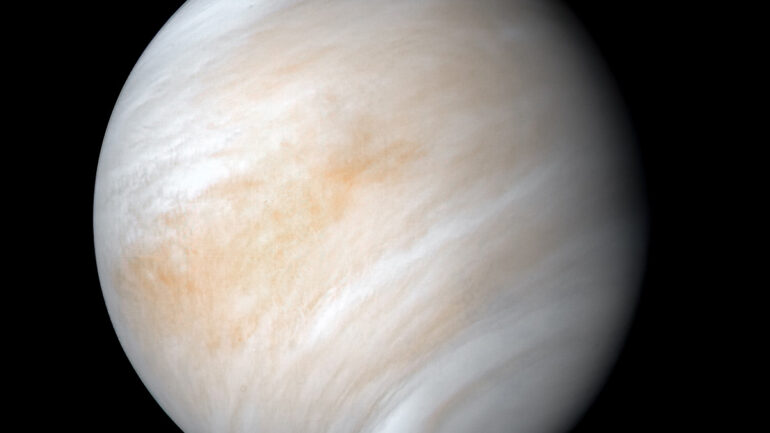In the absence of direct observations of extraterrestrial life, scientists often focus on searching for biosignatures, chemical by-products of life, that can be detected with remote sensing. Although Mars has received the most attention in this regard, other solar system worlds with atmospheres also have been investigated.
In 2021, planetary astronomers reported a detection of phosphine gas in the atmosphere of Venus using ground-based radio observations. The concentration of the gas was initially reported to be 20 parts per billion but was later revised to seven or fewer parts per billion on the basis of improved calibration and analysis of the data. On Earth, phosphine can be associated with biological processes, and researchers are studying whether the gas may be used as a sign of life on other planets.
The purported phosphine detection has been met with skepticism because of difficulties with the data calibration and analysis of the ground-based observational data. Follow-up attempts to detect phosphine in Venus’s atmosphere using other ground- and space-based telescopes also have produced no definitive detection. Cordiner et al. have contributed another set of measurements from a unique observational platform: the Stratospheric Observatory for Infrared Astronomy (SOFIA).
The SOFIA aircraft flies at a height of 13 kilometers, which is above the majority of Earth’s atmosphere, greatly reducing contamination of the phosphine signal from terrestrial sources. The researchers used SOFIA’s German Receiver for Astronomy at Terahertz Frequencies (GREAT) instrument, which has very high spectral resolution, to collect far-infrared spectroscopic data from 75–110 kilometers above Venus’s surface, which is very close to the altitude range measured by the earlier study.
Data collected by GREAT during three observing flights revealed no clear evidence of phosphine, the researchers report. If any phosphine is present in Venus’s atmosphere, and assuming the abundance is constant in time, the new observations indicate an upper limit on its concentration of 0.8 part per billion. This level is the most stringent upper limit presented to date for the entire Earth-facing hemisphere of Venus.
Many intricacies of Venus’s dense atmosphere remain puzzling for planetary scientists. The next big breakthrough may arrive when NASA’s DAVINCI probe (Deep Atmosphere Venus Investigation of Noble Gases, Chemistry, and Imaging) plunges to the planet’s surface, which is scheduled to occur in the early 2030s.
The work is published in the journal Geophysical Research Letters.
More information:
M. A. Cordiner et al, Phosphine in the Venusian Atmosphere: A Strict Upper Limit From SOFIA GREAT Observations, Geophysical Research Letters (2022). DOI: 10.1029/2022GL101055
This story is republished courtesy of Eos, hosted by the American Geophysical Union. Read the original story here.
Citation:
If there is phosphine on Venus, there isn’t much (2022, December 2)



